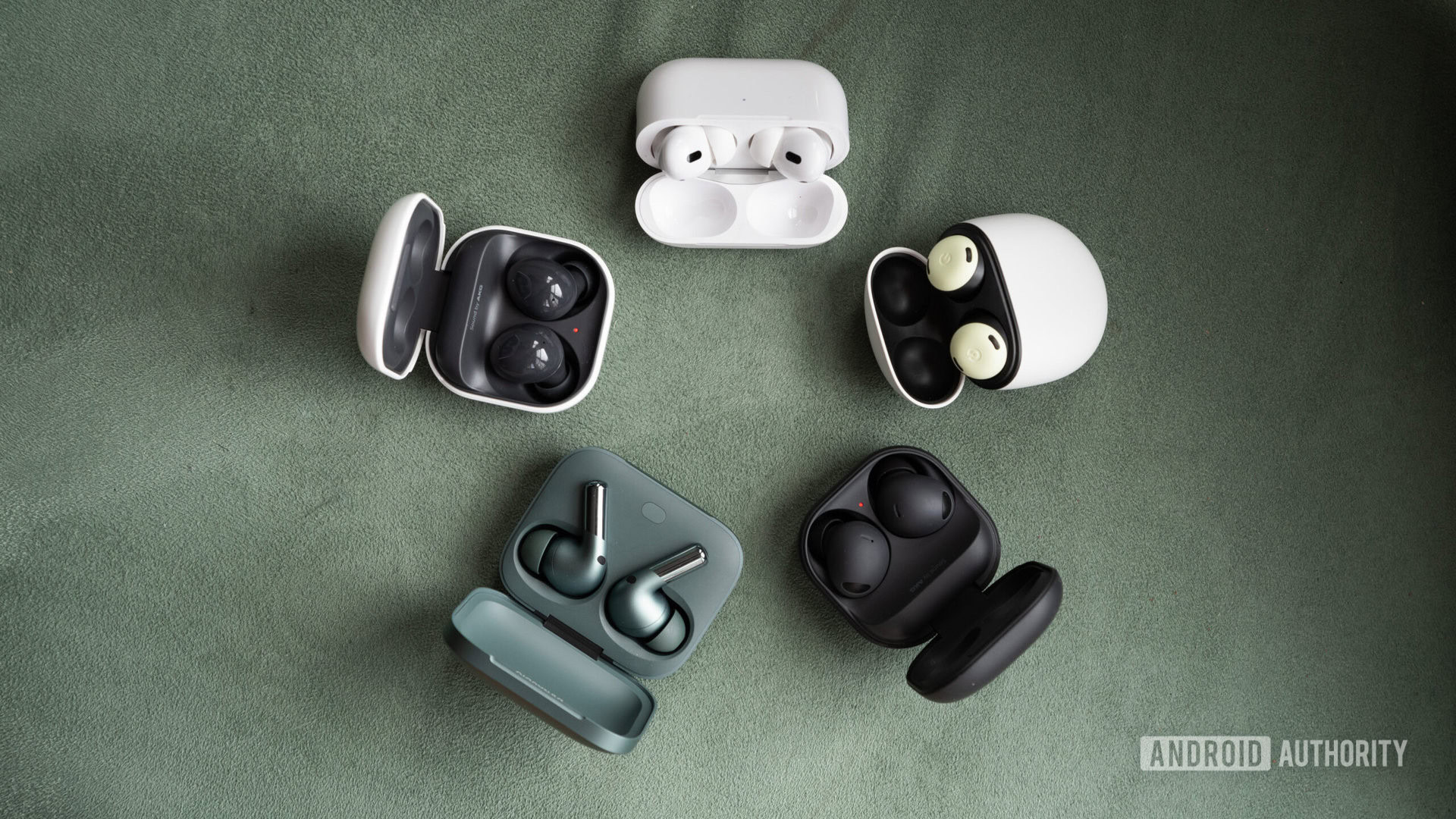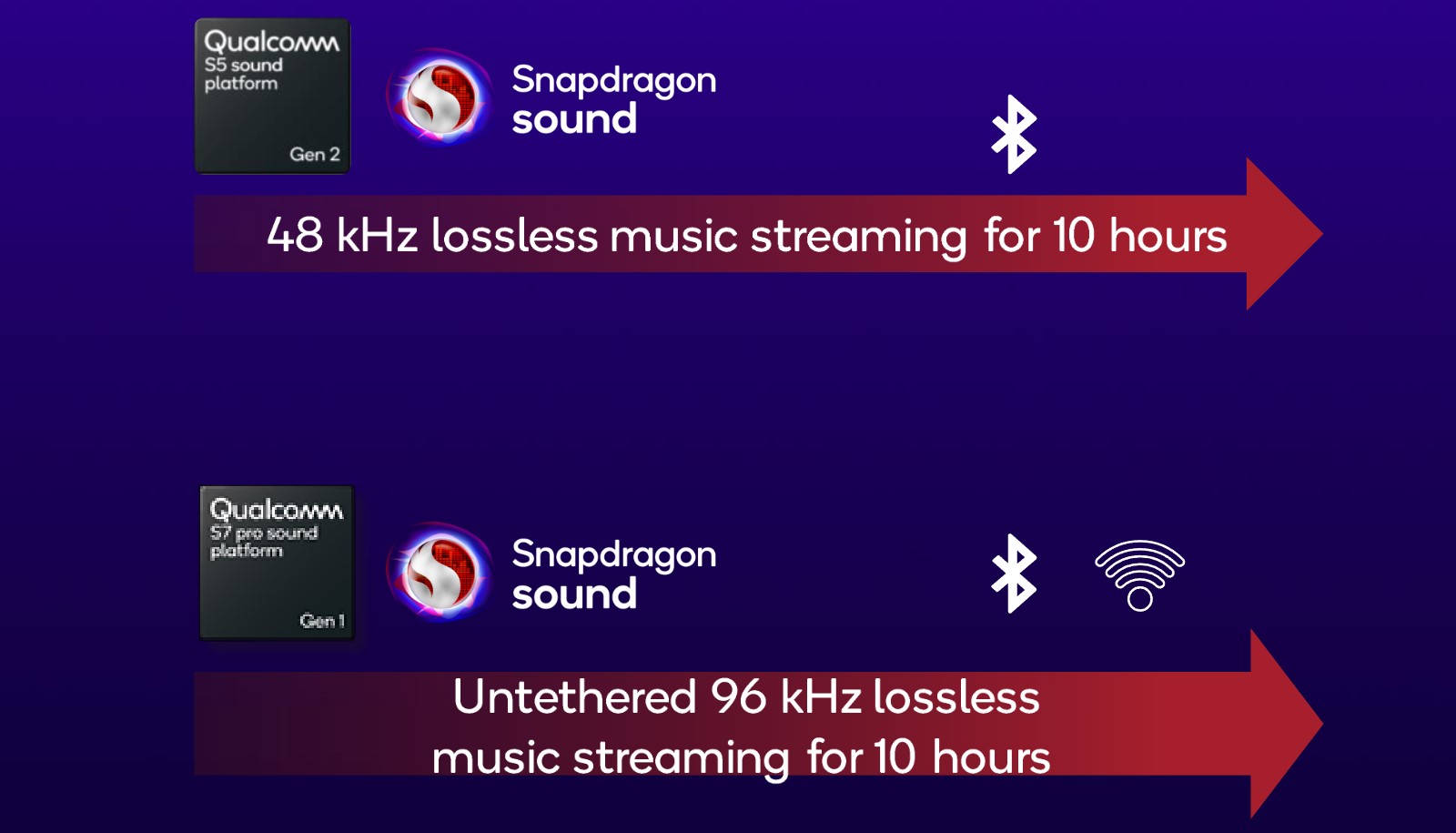Affiliate links on Android Authority may earn us a commission. Learn more.
Qualcomm solves wireless audio's biggest pain-point

- Qualcomm has unveiled the Snapdragon S7 and S7 Pro chipsets for wireless earbuds.
- The S7 Pro’s XPAN tech seamlessly switches audio over Bluetooth and Wi-Fi for improved quality and connectivity.
- Expect Qualcomm’s new audio chips to appear in earbuds throughout 2024.
Why can’t my wireless earbuds use Wi-Fi instead of Bluetooth? I’ve lost count of how often I’ve heard that question, but the answer has always been the same: Wi-Fi simply consumes too much power. Wi-Fi audio is well-established in home audio products, but battery-powered headphones are much more power-limited.
We’ll have to revise that soundbite, though. Qualcomm’s new Snapdragon S7 Pro audio chipset enables earbuds to playback audio over both Bluetooth and Wi-Fi, vastly improving connection range and stability without sapping juice.
XPAN: How does it work?
The key to Qualcomm’s innovation is its Expanded Personal Area Network technology — XPAN for short. In a nutshell, XPAN seamlessly switches from Bluetooth to Wi-Fi (with 2.5, 5, and 6GHz bands all supported) when required, such as when roaming further away from your phone/laptop. As long as you stay on your Wi-Fi network, you can listen wherever you like.
You will need Qualcomm tech on both ends of the connection, so a Snapdragon smartphone and S7 Pro-powered earbuds, at least for now. However, Qualcomm notes that it isn’t reinventing the wheel; it’s the same traditional Bluetooth and Wi-Fi standards that, in theory, others could piece together. Qualcomm’s secret sauce is partly found in its Snapdragon Sound software stack and partly in its radio hardware expertise; there’s a new proprietary Wi-Fi part alongside the Bluetooth SoC in the S7 Pro.
But the important bit is that Wi-Fi connectivity is a boon for high-end listening experiences. It enables lossless 24-bit 96kHz audio in the same power budget as Qualcomm’s current lossy 96kHz Bluetooth option. Qualcomm says it can go further, with up to 192kHz sample rates and Hi-Res multi-channel in the future. High bitrate and low latency audio (under 50ms) for gaming are also possible — you currently have to pick one with Bluetooth.

This could also be a boon for battery life; its micro-power Wi-Fi solution actually uses less power than Bluetooth when streaming equivalent audio. Bluetooth still has its place though, such as when taking an audio call or listening to lossy music close to the host device.
What else does the Snapdragon S7 series offer?
Qualcomm has a regular Snapdragon S7 chip too, which is the same as the S7 Pro sans XPAN. The two models boast Qualcomm’s fourth-generation ANC, supporting context-aware adaptations and real-time blended transparency modes. The new chips include 100x improved on-device AI capabilities versus the last generation, thanks to a dedicated NPU built specifically for low-power applications. This enables features such as enhanced head tracking to drive dynamic spatial audio, reduce latency, and advanced environmental analysis for ANC.
Other features include Bluetooth 5.4 support with LE Audio and Auracast. Snapdragon Sound with Qualcomm High-speed Link is also supported on both models. If that’s not enough, the new chips boast 3x the DSP performance, 3x the memory, and 6x the compute performance of last-gen, vastly improving their audio processing capabilities.
The first Snapdragon S7 and S7 Pro-equipped earbuds are expected to land on the market in 2024.